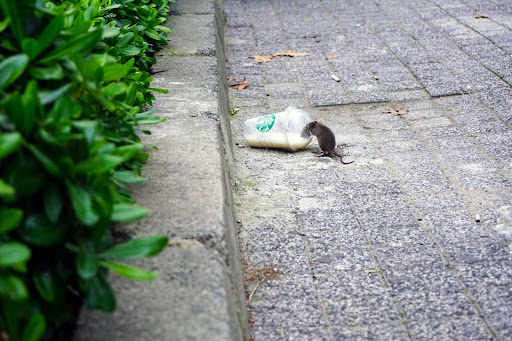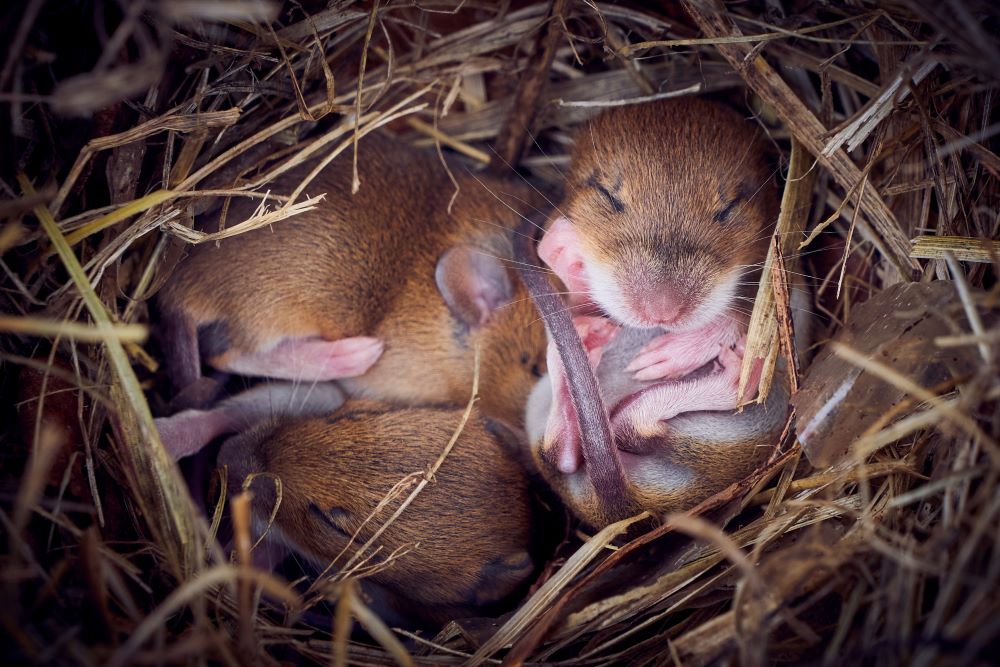Mesa is a beautiful place to live. The mild winters, the stunning sunsets, the lovely cacti… and, oh yes, the rodents. Unfortunately, these little critters can put a real damper on your desert paradise.
But don’t worry – you’re not alone. In fact, you’re in good company. According to a recent survey, 14.8 million U.S. households reported rodent sightings in 2020 alone!
No need to fret just yet – we’ve got you covered with some advice on how to say “adios” to these uninvited guests.
The Stakes of Rodent Infestation
Before we get into the nuts and bolts of rodent control, let’s take a moment to understand why it’s essential to keep these pesky intruders out.
Rodents aren’t just cute little furballs. They can cause extensive damage to your home, gnaw through electrical wiring (hello, fire hazard!), and even spread diseases like Hantavirus and Salmonella. Trust us, no one wants that kind of drama.
Want to know how you can tell if you have a rodent problem? Here are some telltale signs that you’ve got company:
- Droppings: Little black pellets scattered around your pantry or under the sink.
- Gnaw Marks: Look out for chewed-up wires, furniture, or even food packaging.
- Nests: Rodents love to make cozy homes out of shredded paper, fabric, or plant material.
- Scratching Noises: If you hear odd noises in your walls or attic, it’s likely the sound of tiny feet scampering around.
Common Rodents in Mesa
Mesa isn’t just a favorite spot for snowbirds; it’s also quite popular among all different kinds of rodents. The most common culprits you’ll encounter are:
- House Mice: Small, with large ears and a pointed snout. They love nibbling on your pantry snacks.
- Roof Rats: Sleek, agile, and excellent climbers. They prefer nesting in high places like attics or trees.
- Norway Rats: Bigger, chunkier, and ground-dwellers. These guys can chew through just about anything.
Have you ever wondered why rodents seem to love your Mesa home? First, the climate is perfect for them. The hot summers and mild winters make for excellent breeding conditions.
Not only that, but urban sprawl has provided them with plenty of hiding spots, including homes, gardens, and parks. And let’s not forget the abundance of food sources – hello, backyard BBQs!
The Most Effective Rodent Control Techniques
Now that you know what you’re up against, let’s talk strategy. Here are some effective ways to keep those rodents at bay:
- Seal Entry Points: Inspect your home for gaps or holes and seal them with steel wool or caulk. Trust us, rodents can squeeze through the tiniest openings.
- Clean Up Clutter: Rodents love a good hiding spot. Keep your home tidy and free of unnecessary clutter.
- Proper Food Storage: Store food in airtight containers and keep your kitchen clean. No crumbs, no party for rodents.
- Keep Trash Secure: Use lidded bins and take out the trash regularly. Rodents, as well as countless other types of pests (like flies and wasps) love garbage, so you’ll likely see a decrease in pest populations of all types by being more vigilant about the trash.
- Maintain Your Yard: Trim bushes and mow the lawn regularly. This will reduce hiding spots for rodents and other types of pests. Plus – the curb appeal!
- Fix Leaks: Rodents need water too. Fix any leaks to deprive them of this resource.
- Remove Outdoor Attractants:Trim tree branches that overhang your roof and remove piles of debris or firewood near your home.
If you’ve tried all the DIY methods and still find yourself playing host to unwanted guests, it might be time to call in the pros.
Professional pest control services, like Green Magic Pest Control, offer specialized treatments that target rodents effectively. They can also provide ongoing maintenance to ensure your home remains rodent-free.
Don’t overlook the benefits of regular inspections, either – prevention is always better than cure. Conduct regular inspections of your home to catch any signs of rodent activity early. Check your attic, basement, and other potential nesting sites for any telltale signs.
The Real Cost of Rodent Damage
Ignoring a rodent problem can get expensive. From chewed wires and structural damage to health-related costs, the price of inaction is high. Investing in rodent control measures now can save you a lot of money down the road.
Keeping rodents out of your home requires a mix of vigilance, prevention, and sometimes professional help. By following these tips, you can ensure that your Mesa home remains a rodent-free haven.
If the battle against rodents feels overwhelming, Green Magic Pest Control is just a call away. Our expert team serves Chandler, Mesa, Phoenix, and the rest of The Valley. We’re here to help you reclaim your home and keep it secure from unwanted critters.
Ready to live rodent-free? Contact Green Magic Pest Control today and take the first step towards a safer, healthier home.




 Have you ever wondered how far do mice travel from their nest when scurrying around your home? It’s a critical question to ask, especially if you’re spotting mouse poop or signs of mouse nests in unexpected places. Understanding the distances these tiny pests can cover is key in addressing infestations effectively and safeguarding your living spaces from unwanted guests.
Have you ever wondered how far do mice travel from their nest when scurrying around your home? It’s a critical question to ask, especially if you’re spotting mouse poop or signs of mouse nests in unexpected places. Understanding the distances these tiny pests can cover is key in addressing infestations effectively and safeguarding your living spaces from unwanted guests.